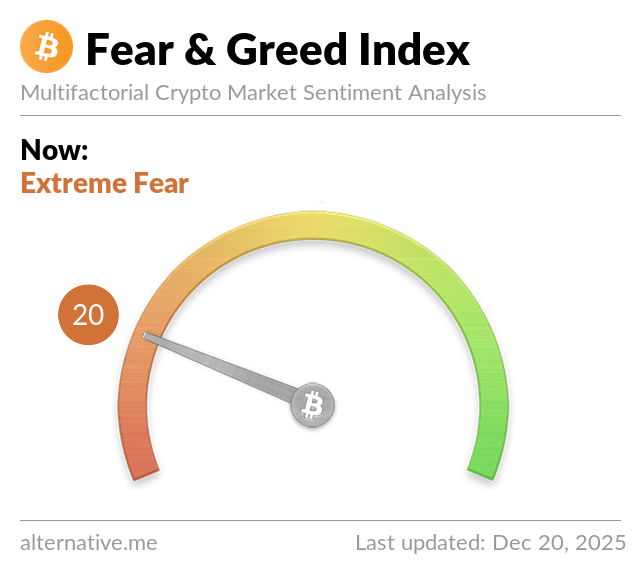With the increase in the price of Bitcoin in recent weeks, the fear and greed index has returned to its annual highs.
According to the data reported by alternative.me, one of the main platforms that provides this parameter, the index has fluctuated for days at values between 70 and 80, thus moving from greed to extreme greed.
How does the Fear and Greed Index work
The “Fear and Greed” index analyzes the sentiment of the traders operating with Bitcoin and cryptocurrencies. It is an index that goes from 0 to 100, divided as follows:
- 0-25, extreme fear;
- 26-50, fear;
- 51-75, greed;
- 76-100, extreme greed.
This index is drawn by combining several parameters.
- Volatility: it accounts for 25% and takes as reference the price fluctuations of Bitcoin, compared with the average values of the last 30 and 90 days;
- Volumes: accounts for 25%, and is calculated like volatility, compared to the 30 and 90-day values;
- Social media: measures Bitcoin’s engagement on Twitter, accounts for 15%;
- Dominance: worth 10% and controls the market share of Bitcoin and altcoins;
- Trend: analyzes Google search trends for Bitcoin and related terms and accounts for 10%;
The last parameter that is worth 15% is taken from the surveys that Alternative.me conducts on its own platform. At the moment, however, the surveys are at a standstill and therefore do not affect the Fear and Greed index.

What is the point of knowing the sentiment of the operators
The Bitcoin and cryptocurrency market, being affected by volatility, is also likely to be very emotional. The Fear and Greed Index aims to provide a measure that mitigates emotionality.
However, when the indicator marks “fear”, this is not necessarily a bad thing, on the contrary, Alternative.me considers it a buying opportunity.
Conversely, when there is too much greed, generally when all the factors are positive, the market may undergo corrections and shocks.
Historically the highest point of greed was reached on June 26th, 2019, when Bitcoin reached $13,000 and the index hit 95 points out of 100.
The most difficult moments were February 2018, August 2019 and lastly March 2020. They were three different moments in Bitcoin’s history.
In February 2018 the speculative bubble had just burst, causing BTC to plummet from a $20,000 peak in December 2017 to $6,000 in a couple of months.
August 2019 instead represents the beginning of Bitcoin’s downward phase after the bullish May-July period. This period culminated with December lows at $3,300.
Finally, March 2020 coincided with the crisis in the financial and cryptocurrency markets, triggered by the Coronavirus and which led Bitcoin to lose half of its value in the terrible days between March 12th and 14th, falling to below $4,000.
From those levels, the price of Bitcoin and with it the fear and greed index slowly returned to rise again.
But as the market teaches, you should never stay relaxed, because periods of relative calm can actually lead to storms from which you should take shelter.



